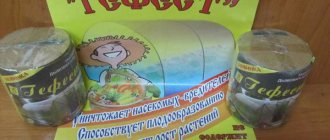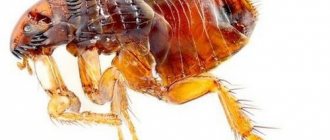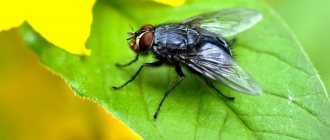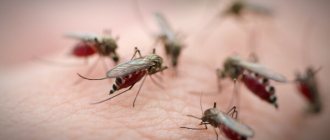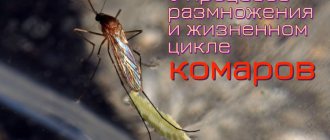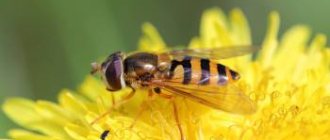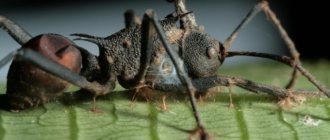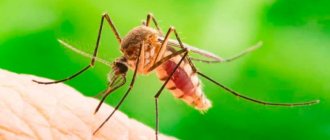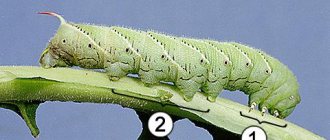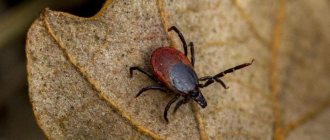Aphids on plants are not a reason to panic, but a signal for decisive action. What are these small voracious insects and how to deal with them?
Aphids are a suborder of homoptera insects that are not averse to ruining the life of cultivated plants. Within Russia alone, there are about 1.5 thousand species of these pests - green apple, cherry, blood, thistle, grape aphids, etc. They all make up four families: true, gall-forming, as well as Hermes and phylloxera.
Origin of the species and description
Photo: Aphids
Aphids are a superfamily belonging to the class of insects. It has not been reliably revealed when and from whom insects originated - there is not a sufficient array of fossils from those times to reveal this. There are only the most reliable and widespread hypotheses, but they can be refuted over time. Thus, it was previously believed that they originated from millipedes, but now the much more common point of view is that they are closest to crustaceans and arose either from a common ancestor or directly from crustaceans.
The most ancient crustaceans were found in Early Cambrian sediments more than 510 million years old, insects - only in layers formed a hundred million years later. This makes it more likely that insects originated from crustaceans than from a common ancestor, although it cannot be ruled out that their earliest remains were simply not found or were not preserved at all.
Video: Aphids
Phylogenetic reconstructions are also consistent with this version. It is considered most likely that insects evolved in the late Silurian period. But when exactly the aphid occurred is unknown. The fact is that its fossil remains are very rarely preserved; perhaps the only option is if they ended up in amber. But this method has limitations, since the oldest amber is 120 million years old. Ultimately, such finds are too few to draw conclusions, but at least they make it possible to establish a time when aphids definitely inhabited our planet - the beginning of the Paleogene period.
It is also possible that they became one of the species that appeared after the Cretaceous-Paleogene extinction, and that they arose significantly earlier. Analysis of the available data and the morphology of the aphids themselves does not allow us to lean towards one of these options: insects constantly continue to generate new forms, both developed and seemingly primitive.
For example, dragonflies and cockroaches appeared in the Carboniferous period, hymenoptera - in the Triassic, butterflies in the Cretaceous, higher dipterans only in the Neogene, and lice in the Pleistocene, that is, quite recently by the standards of paleoanthology. Aphids are able to quickly change and adapt when new plants appear - this is facilitated by their reproductive system with the accompanying rapid variability of generations. As a result, they have formed an extensive superfamily, including ten families and thousands of species.
Its scientific description was compiled by P. Latrey in 1802, the name in Latin is Aphidoidea. But it should be noted that there are other classification options: sometimes, in addition to the one indicated, another superfamily Phylloxeroidea is distinguished, and sometimes two - the last one is Adelgoidea. There is also an option in which Aphidoidea becomes a megafamily, including a number of superfamilies. The researchers did not come to a common point of view.
Biological methods
There are biological insecticidal preparations that have a natural composition. When used correctly, they are safe for both plants and humans. The preparations Fitoverm and Iskra Bio are especially popular among summer residents.
Biological methods also include attracting natural enemies of aphids to the site. These include various species of birds, lizards, frogs, as well as predatory insects: ladybugs and their larvae, lacewings, wasps, ground beetles, and earwigs. But if huge colonies of aphids have already formed on the plants, predator insects simply will not be able to cope with them. This method may be more of a preventive measure than an effective control option.
Appearance and features
Photo: What aphids look like
The shape of the aphid's body is close to round; in most species, the length is no more than 3 mm, although there are also especially large ones, reaching sizes up to 8 mm. The shape of the head is trapezoidal; compound eyes and antennae stand out in front, serving as an organ of touch. Vision is very good, but aphids distinguish colors poorly, usually only a few shades. It itself can have a different color - most often it is green, so as not to stand out on the plant on which it feeds, but it can also be different: brown or dark gray, matching the color of the branches, white, red. Aphids have a thin proboscis, with the help of which they draw juices from plants: it is sharp and can pierce a leaf or stem so that they can get to the juice.
The body of the aphid is covered only by a soft and almost transparent shell - unlike insects protected by a chitinous cover, it is practically defenseless when attacked by a predator. Breathing holes are located on the anterior segments. Although the aphids have long legs, they usually move with difficulty and rather slowly. Representatives of some species crawl on plants, others can jump, pushing off with their front legs, but it is easiest for those that have wings. Such individuals can fly quite long distances, so their offspring quickly disperse throughout the area. Interestingly, only females can have wings. Aphids without wings densely populate a small area, and it is with them that gardeners and gardeners have to fight.
Interesting fact: The Stomaphis aphid holds the record for the longest proboscis. It exceeds the size of the insect itself: an adult aphid of this species reaches 5-6 mm, and the proboscis can exceed 10 mm.
What are aphids and how to recognize them
The body shape of an adult aphid can be teardrop-shaped, oblong, ovoid or hemispherical. The length varies from 0.3 to 0.8 mm. The integument is soft and, as a rule, transparent. The color most often matches the color of the food substrate and can be green, gray, brown, beige, red, black, etc. Often there are outgrowths, tubercles, fluff and hairs on the body. Let's take a closer look at some common aphid species.
Leaf gall aphid
Favorite food: leaves of white, red and black currants. The easiest way to detect the pest is by the galls that appear on the plant - yellow or burgundy swellings.
Beet, or bean, aphid
It affects poppy, jasmine, viburnum, sunflower, legumes, beets and potatoes. The vital activity of aphids leads to curling and wrinkling of the leaves of the plant, as well as to a significant slowdown in its growth and even death.
Melon or cucumber aphid
This type of aphid can be found on melon crops - watermelons, pumpkins, melons, cucumbers; it also affects sesame, peanuts, and beets.
Cabbage aphid
Favorite habitat is radish, cabbage and radish crops.
carrot aphid
Causes serious damage to carrot crops, as well as other plants of the Apiaceae family. The pest sticks to the leaves and stems, which impairs the nutrition of the root crop and reduces the crop yield.
rose aphid
Settles on roses, rose hips, as well as strawberries, apple trees and pears. Plant leaves curl, and the crop itself weakens and loses its ability to resist viral diseases.
Potato aphid
Harmful to cabbage, potatoes, beets, tomatoes, as well as greenhouse and indoor plants.
Greenhouse peach aphid
Lives on peaches, cherry plum, tobacco, cabbage, potatoes, radishes, dill, cucumbers, parsley, lettuce, and greenhouse crops.
Mealy, or hairy, aphid (mealybug)
Settles on greenhouse and indoor plants, as well as on citrus fruits and grapes. As a result of a pest attack, the leaves become covered with a powdery coating, the stems become deformed, and the buds dry out and fall off.
Where do aphids live?
Photo: Aphids in Russia
She is able to live almost anywhere there are plants. The most preferable climatic conditions for it reign in the temperate zone - the insect does not like severe cold, but it also has difficulty withstanding heat. However, some species have adapted well to life in the tropics. In the subtropical climate zone, the greatest diversity of species is observed. Aphids prefer areas with average humidity, equally disliking both overly wet and dry areas - but they are also found in them, just less often.
These insects are able to live in a wide variety of environments - in steppes, meadows, fields, forests, parks, and finally, in gardens. If the summer is cold and rainy, there are very few aphids, but as soon as favorable conditions arise, they multiply rapidly. Its eggs die at temperatures below 25-30 degrees, but even in the north with its cold winters, aphids manage to survive under snow litter, in anthills or other shelters, where it is much warmer than outside.
Very often it can be seen near anthills - it develops a symbiotic relationship with their inhabitants. The ecological niche of aphids is very wide; you can encounter them both above the ground - they climb onto plants and suck sap from them, and in the air and in the soil - some species suck sap from the roots.
Nutrition
The diet of aphids consists of plant juices rich in carbohydrates and amino acids. This is how both growing larvae and adult aphids feed. The overwhelming majority of species are very unpretentious and can feed on any plants located in a park, garden, vegetable garden, forest or field. Only some species are selective and drink the juices of only certain grasses, shrubs, trees, agricultural or forage crops.
It is difficult to list what aphids eat, because the list will be huge. It is much easier to name plants that do not attract her and even repel her. Among them:
- garlic;
- onion;
- fennel;
- mustard;
- chives;
- mint;
- lavender;
- marigold.
It is these crops that gardeners plant to drive away small pests from the site and protect the future harvest.
What do aphids eat?
Photo: Aphid insect
She feeds on the juices of plants, and a wide variety of them. Some species have special preferences, but most aphids can drink juices from a wide variety of plants, and this applies to herbs, shrubs, and trees. Almost any non-garden or vegetable plant can be attacked by an aphid, therefore it is more useful not to list them all, but, on the contrary, to list the species that it does not like - even their proximity can scare it away. Among the most accessible plants to gardeners, it includes garlic, onion and Dalmatian chamomile. There is another way to combat aphids - to select a place on the site specifically for them and plant there those plants that attract them more than others.
Among them:
- poppy;
- cosmos;
- nasturtium;
- tuberous begonia;
- Linden;
- viburnum.
As a result, these plants are left to be torn apart by aphids, and it is assumed that the pests will not be distracted by others. But for this they need to be planted at a distance, so they require a lot of space. In addition, the aphid population should be controlled and not allowed to multiply excessively - it may be necessary to use toxic chemicals. Therefore, sometimes a similar, but slightly different method is used - plants that attract aphids are planted in a ring around those that they are supposed to protect, and when the aphids breed on them, these plants are mowed down and their entire colony is destroyed.
Aphids on currants and other fruit bushes
In spring, it is advisable to pour boiling water over the currant bushes. The affected parts of the plant are cut off and burned. An effective remedy is a soap-ash solution. Dissolve 2 tablespoons of liquid soap and 0.5 liters of wood ash in 5 liters of water. It is recommended to dip the tops of the branches into the prepared mixture.
Chemicals should be used with great caution due to their potential danger to humans when other control methods become ineffective.
Features of character and lifestyle
Photo: Yellow aphid
Aphids spend most of their life feeding. From morning to evening, she can suck out the juices from the plant, from time to time crawling to the next leaf, because they have dried up in the previous one. She is very voracious, mainly due to the fact that she constantly reproduces, and this requires a lot of nutrients. Sometimes aphids enter into a symbiotic relationship with ants, taking advantage of their love for sweets. Aphids produce sweet secretions, and the ants take care of them for this: they transfer them to other plants when required, protect them, care for their eggs and build shelters that protect them from bad weather.
When aphids are attacked by predators, the ants defend them to the last and often even die, hoping to wait for their relatives to approach. To make this happen less often, aphids can even be placed in an anthill, where it is much easier to ensure their safety, but you have to feed them. The process of obtaining sweet secretions is called milking, because outwardly it is very similar to milking a cow - the ants massage the abdomen of the aphid, and it secretes a portion of viscous secretions, after which the ants immediately eat them.
You can get a very large amount of moisture per day from one aphid, sometimes comparable to its weight. The shortest-lived species of aphids die a couple of days after birth, others can live for several weeks. In cool climates, the lifespan increases to two months.
Interesting fact: Treating plants with poisons or bacterial solutions against aphids should be done in clear sun. If the weather is cloudy, then the leaves curl, and some pests can survive inside them, and even a small number will be enough for them to quickly again fill the entire area. Therefore, it is necessary to treat all areas where aphids have settled, and it is better to agree in advance with neighbors if they also have aphids.
Risk factors. What is the main danger?
The damage caused by aphids is quite great. Colonies are located on the lower surface of the leaves and cannot be recognized immediately. During their life, aphids release toxins that lead to changes in the shape of plant organs. This is especially noticeable on young leaves and shoots.
The leaves curl, the buds fall off before they have time to open, and the fruits do not set. Spots or pigment mesh may appear on the leaves. Blistering and swelling on the leaves may be observed - this is the formation of galls, which over time become ulcers. A grayish coating may be observed on the leaves, this is a consequence of infection with a fungus. On top of all this, the leaves become sticky and sticky due to the honeydew secreted.
If there is a massive infestation of aphids, plant growth can be completely stopped. Weakened, diseased plants, or parts of plants, cannot withstand wintering and die.
Risk factors caused by aphid infestation of plants
In addition to all of the above, some types of aphids carry incurable viruses that infect plants. In this case, it is simply impossible to save an apple tree or currant bush; it needs to be dug up by the roots and disposed of.
Social structure and reproduction
Photo: Aphids on leaves
Aphids live in large colonies, and they can arise from one individual and multiply incredibly. It happens like this: a fertilized female lays eggs, most often choosing inconspicuous and well-covered places for this. The masonry may end up near the roots of plants or in the bark of trees, in anthills. The eggs spend the winter there, and when the weather warms up, new individuals emerge from them. These are wingless females capable of reproduction through parthenogenesis, that is, without the participation of males. Once in a favorable environment, they do this very quickly. In the next generations of some species of aphids, females are already born with embryos inside, and soon they themselves produce offspring.
This further speeds up the process and the aphids begin to multiply exponentially. A female can give birth to several dozen larvae every week, and they grow very quickly and begin to reproduce 2-3 days after birth for short-lived species, or 1-2 weeks for long-lived species. All this time, only wingless females appear. But if a colony of aphids grows excessively and begins to lack food in the area, winged females begin to be born. They fly away from the colony and found new ones, still reproducing by parthenogenesis. Such a female is capable of flying 20-30 kilometers.
Some species are dioecious: until winged females appear, they live on some plants, after which they stop reproducing on them and move to others. Finally, in the fall they return to their original place. During the spring and summer, 10-20 generations of aphids manage to change, and if you don’t fight them, then each time there are an order of magnitude more of them. Finally, when the weather worsens with the onset of autumn, males and females emerge and are capable of reproducing sexually. In this case, fertilization occurs, and larvae will not be born, as before, but a clutch will be made that can survive the cold. There are much fewer of them - all that is required is to produce female founders in this way, who will begin to reproduce by parthenogenesis in the spring, and the whole process will begin anew.
Mr. Summer resident recommends: methods and means of combating aphids
All types of aphids on different plants are destroyed using approximately the same methods and means. There are also slight differences and preferences specific to certain cultures.
To combat the pest, traditional methods and means, biological and chemical preparations are used.
Traditional methods and remedies
Mechanical removal of the parasite using a jet of water or by hand is recommended every few days. Be sure to remove affected leaves. Breed natural enemies (ladybugs, earwigs, hoverflies, lacewings). Nearby anthills are destroyed due to the existing symbiosis between forest orderlies and aphids. Plants that have a repellent effect are planted around the beds: onions, garlic, carrots, dill, Dalmatian chamomile.
A gardener has in his arsenal many effective means that are used to treat plants to combat parasitic insects.
| Name | Cooking method | Features of application |
| Insecticidal soap or dishwashing liquid solution | A tablespoon is diluted in a liter of water. | To avoid damaging the plant, the soil should be covered with polyethylene or foil during treatment with alkaline solutions. The procedure is carried out on a cloudy day or late evening. |
| Infusion of tomato leaves | Soak 2 cups of chopped leaves in 2 cups of water and leave for 24 hours. | Before spraying, the resulting slurry is filtered through cheesecloth and half a liter of water is added. |
| Garlic infusion | 3-4 cloves of the plant are crushed, 2 teaspoons of vegetable oil are added to them and the mixture is infused for 24 hours. After straining, add half a liter of water and a teaspoon of dishwashing detergent. | Before spraying, dilute 2 tablespoons of concentrate in a glass of water. |
| Infusion of shag | 500 g of powder is poured into 1 liter of boiling water and boiled for 30 minutes. | Before use, the filtered concentrate is dissolved in a bucket of water. |
| Ash based product | Two glasses of ash powder and 50 g of laundry soap shavings are poured into a bucket of boiling water. Leave for 12 hours. | Before spraying, filter the product. |
| Apple cider vinegar solution | Add 1 tablespoon of acid to 1 liter of water. | The solution is ready for washing foliage. |
| Baking soda solution | 75 g of powder is stirred in a bucket of water. | The product is ready for spraying. |
| Ammonia solution | 2 tablespoons of ammonia and 1 tablespoon of liquid soap are added to a bucket of water. | |
| Mustard solution | 30 g of powder is stirred in 10 liters of water. | |
| Infusions of wormwood, yarrow and celandine | The grass is soaked in a ratio of 1:2 and a decoction is prepared. | Before spraying, 1 liter of concentrate is dissolved in a bucket of water, to which 40 g of laundry soap is added. |
| Bleach solution | 2 tablespoons of lime are diluted in a bucket of water. | Use before planting seeds. |
Biological drugs
Fitoverm (Aktofit), Iskra BIO, Bitoxibacillin received good reviews. The products are based on microflora (viruses or bacteria) that selectively infect insects.
The most popular is Fitoverm. Appears after 48 hours. The maximum result is observed on the 5th day. The duration of the protective effect is a week. Effective at air temperatures above +20 °C.
Repeated spraying is recommended every 7 days.
Chemicals
They are distinguished by high insecticidal activity. Due to the potential danger to humans, it should be used strictly following the instructions. The gardener's arsenal includes: Kalash, Biotlin, Karbofos, Aktara, Tanrecom.
One of the frequently used Aktara. Insects begin to die after 6 hours. The protection period is largely determined by climatic conditions and can vary from 2 to 4 weeks. The agent is effective at any temperature. To protect bees, it should be used in the evening or in cloudy weather.
Natural enemies of aphids
Photo: What aphids look like
Insects and birds feed on aphids. Of insects these are:
- ladybugs;
- some riders;
- praying mantises;
- earwigs;
- ground beetles;
- lacewings;
- hover flies;
- wasps.
Of all the above, the most harmless for the garden, and at the same time the most effective in combating aphids, are lacewings and ladybugs. For both, it can become the main source of food, and the eggs of these insects can be bought in specialized stores. Once the population has been bred from them, aphids can be forgotten. Plants that attract these insects also help: umbrellas, legumes and spicy plants. For example, common dill, clover or mint will bring them into the garden. And when buying eggs for breeding, you should also not forget about these plants, otherwise the brood may simply fly away, but the aphids will remain. Ground beetles can be attracted to nightshades, hover flies flock to daisies, and for earwigs, you can put flower pots in the garden and put shavings in them. Small birds also fight aphids, but are not as effective, and they can also cause damage to gardens themselves.
Interesting fact: Parasitic wasps prefer to lay their eggs in green-colored insects, while ladybugs are more likely to hunt red ones. The aphids adapt to them - if there are more parasitic wasps nearby, then a red one is born, and if there are ladybugs, a green one is born.
Now you know how to get rid of aphids on your property. Let's see how the insect reproduces.
Harm to humans
Aphids are a dangerous pest that causes enormous damage to agriculture. Colonies of small insects can destroy entire fields. There are several reasons why aphids appear:
- insects can enter the site by flying in in search of a place for a new colony;
- perhaps plants were planted that were already infested with insects;
- The larvae could be brought by the wind, an animal on fur, a person on clothes, a bouquet of flowers, or tools.
Affected plant
Damage from aphids that have settled on the site:
- due to the fact that the pest feeds on the sap of plants, they begin to wither, dry out, leaves turn yellow and fall off, growth, formation and growth of fruits slows down or stops;
- sweet honeydew secreted by aphids attracts other insects, some of which may be harmful;
- toxins released by aphids during their life processes negatively affect plants, causing deformation of shoots and buds;
- sweet secretions contaminate the leaves and contribute to the appearance of sooty fungus;
- aphids carry many phytopathogenic viruses, causing infection and plant diseases.
To preserve the plantings and get a harvest, it is necessary to take measures to destroy the pest. An integrated approach, including the use of chemicals and folk remedies, will help to achieve maximum effect.
What harm does
If measures are not taken in time, you may be left without a harvest. By sucking out cell sap, aphids systematically destroy the plant. The leaves dry out and the buds die. It is very important not to miss the moment when the pest attacks the crop in the flowering stage. By eating buds and flowers, aphids make it impossible to set fruit.
In addition to the fact that its activity inhibits the development of plants, this pest is a carrier of viral diseases. Since the insect actively migrates around the site, viral diseases very quickly affect a large number of plantings. There is so much harm from it that it is better not to know what aphids are at all.
Ants facilitate the spread of aphids throughout the area . They really like the sweet juice that the pest secretes. Ants carry aphids from one plant to another, using them as producers of tasty food. In this regard, the appearance of ants should be treated with caution. It is necessary to fight not only the visible and immediate pest - aphids, but also those who are closely associated with it - ants.
